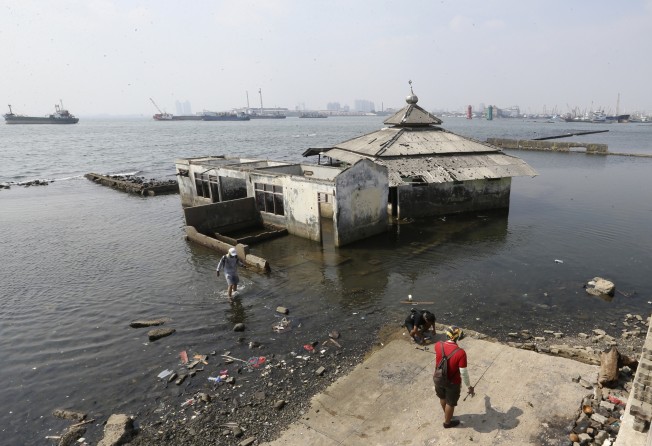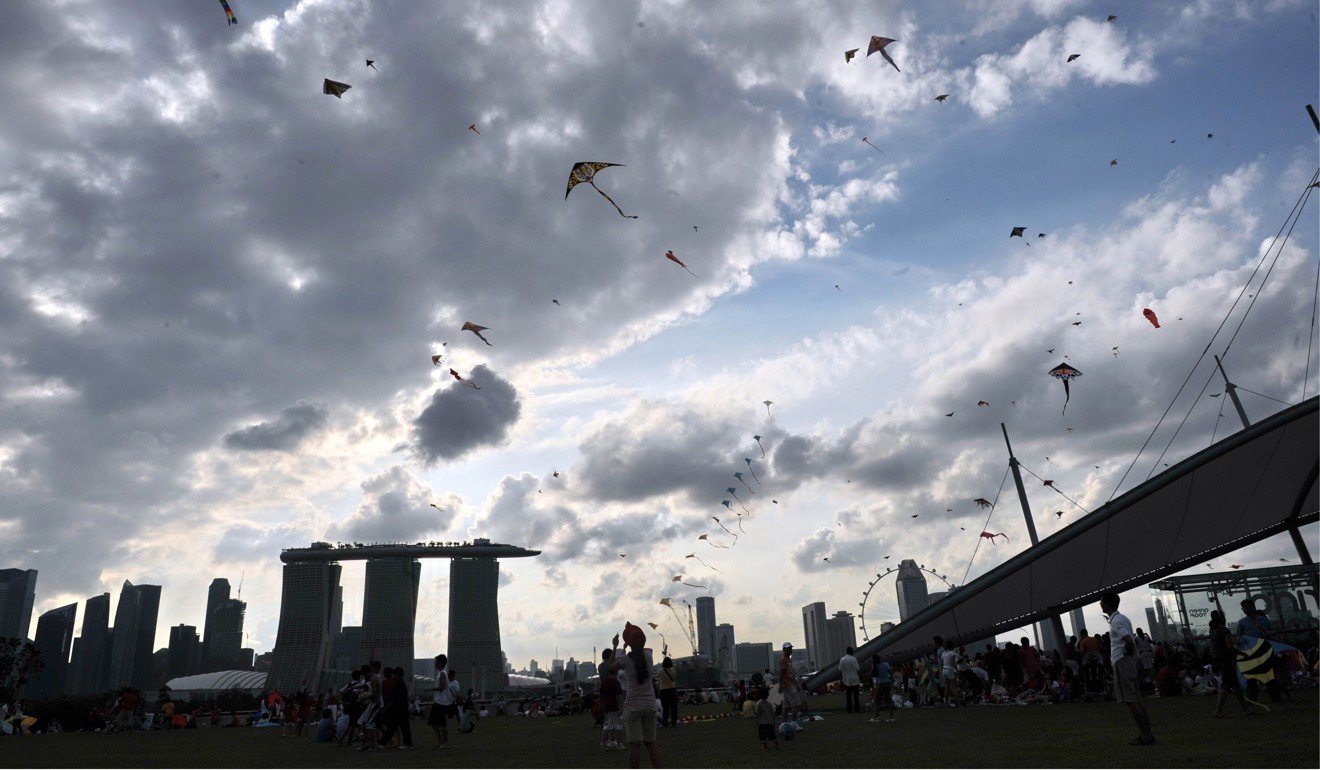Asia’s sinking cities need ‘Great Sea Walls’ to defend against rising waters, and fast
- Many parts of coastal Asia might be submerged by 2050 if nothing is done by governments, individually or collectively, to protect these areas. Singapore provides an excellent example of how to combat rising sea levels

Asia’s coastal cities are sinking and, by 2050, at least 3,300km of the region’s coastlines will be acutely vulnerable to the aggressive rise of the sea. The time has come for Asian countries, individually or collectively, to build “Great Sea Walls” in defence, and at the same time provide critical freshwater reserves for thirsty urban populations.
The facts are alarming. Jakarta is sinking by as much as 25cm a year in some parts, due to the extraction of groundwater for daily use. Manila is subsiding at an annual rate of 10cm, and Bangkok, 1cm to 2cm.
Cities such as Ho Chi Minh City, Kolkata, Shanghai and Dhaka have all reached rather worrying subsidence rates of more than 1cm a year. Making matters worse for Dhaka and low-lying areas near the Bay of Bengal, high tides in Bangladesh are rising 10 times faster than the world average.
But it gets worse, not just for these cities but for all of coastal Asia. A recent report by Climate Central, a US-based non-governmental organisation, offers a grim picture of how severely rising sea levels will affect various parts of Asia – and how soon.
Using improved global elevation data, Climate Central has determined that a significant number of Asian cities will be submerged by 2050, if not sooner. Cities that are vulnerable to rising sea levels include Jakarta, Manila, Bangkok, Ho Chi Minh City, Shanghai, Yangon and Dhaka. Major parts of Hong Kong, Hanoi, Kolkata and Mumbai are also more than likely to end up underwater. Effectively, over the next couple of decades, all these cities are in the path of a looming tsunami.
But the unhappy fate of these cities is only half of it. Huge swathes of coastline will also be overrun. Take Vietnam, for instance. Climate Central estimates that the lower third of the country will be submerged by 2050. This, of course, could also displace about 20 million people.
Astoundingly, nearly 1,000km of Vietnam’s coastline is believed to be exposed, from Vung Tau in the southeast to the western end of the border with Cambodia. Much of it could be underwater. So could the plains of Haiphong and Hanoi, in the north. Millions of Vietnamese could become climate refugees – in their own country.
Hong Kong and Guangdong province might also be hit very hard. Hong Kong International Airport will probably go underwater, as well as Tung Chung, Kai Tak and some parts of central Kowloon. In Guangdong province, Jiangmen, Foshan and Dongguan are among the cities that might be swamped by saltwater.
Cities and coastal areas in eight countries – China, Vietnam, the Philippines, Thailand, Indonesia, Bangladesh, Myanmar and India – will be laid siege to by the sea. Assessing the maps, these combined coastal areas will measure at least 3,300km in length, and that’s based on 2050 estimates only.
The preservation of Asia’s major coastlines is not optional. No country can afford to lose this amount of vital land, whether it be 100km in Mumbai or 1,000km in coastal Vietnam.
The scale of the problem can be comprehended in this way: the length of Asia’s threatened coastal land mass is around that of half of China’s Ming-era Great Wall.
During the Ming dynasty (1368-1644), about 6,300km of the wall was constructed to defend China against nomadic tribes, including the Manchurians – and this took centuries.
Asia simply doesn’t have that long to build a defence against rising sea levels. It may well have less than 30 years to build a network of dykes to protect itself against the inevitable. In other words, Asia needs to start building sea walls very soon.
Done correctly and inventively, this grand undertaking could also prove to be a blessing for the cities plagued by ground subsidence. It could serve two mutually reinforcing purposes: protecting coastlines and inland areas from the impact of catastrophic flooding by 2050, and; incorporating freshwater reservoirs into the construction of sea walls near these sinking cities.

Singapore provides an excellent example of how other Asian cities in need of fresh water and in danger from rising sea levels could make this work.
A case in point is the Marina Barrage at Marina Bay. In the 2000s, Singapore built a sea wall across the mouth of Marina Channel to keep out the surge of the Singapore Strait, and alleviate flooding in low-lying areas in the city. The result? The land is not only protected from the adjacent sea, but the new structure has also created a large freshwater reservoir.
Whenever the water level in Marina Basin is too high, pumps are employed to drain the excess water out into the sea.
At the same time, by capturing the flow of river water, seasonal rain and seawater from both sides of the dam over the course of a year, Singapore turns brackish water into freshwater for national consumption. Thus, Singapore has a reservoir that is in the heart of town and an attraction in its own right.
Likewise, by building a network of sea walls and incorporating, where applicable, reservoirs into them, Asia could well defend itself against both the hazards of rising sea levels and water stress.
Timothy Cooper is the founder and CEO of Global Sands Consortium Hong Kong Ltd